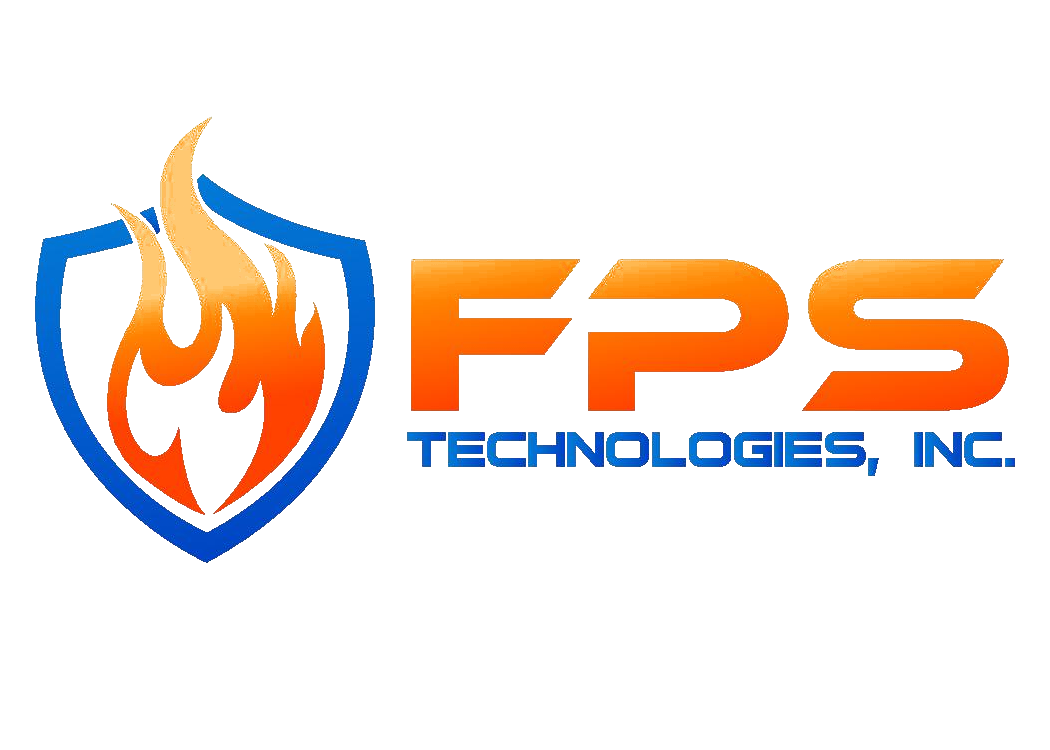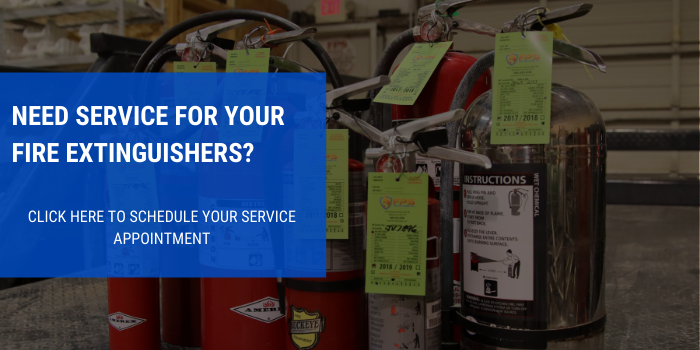Many people mistakenly think that household fire extinguishers can be used to put out an entire room that’s on fire. However, extinguishers are only meant to stop a small fire before it has the chance to spread. The U.S. Fire Administration states that a fire spreads twice as much every 30 seconds.
The key to stopping a fire while it’s small is acting quickly and knowing what you’re doing. In this quick guide, we’ll share some fire extinguisher basics so you’re better prepared to deal with a fire emergency.
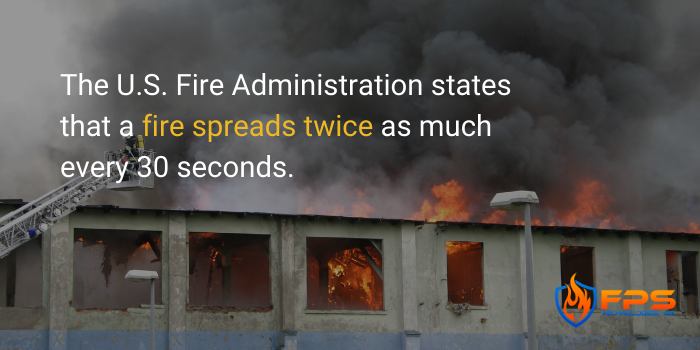
How Do You Use a Fire Extinguisher?
First, know where your fire extinguishers are. Your local government most likely has a fire code that applies to businesses like yours. If you don’t have a fire extinguisher in sight, you’re probably in violation of a code or two.
On top of this, it’s simply not practical to be digging around for your fire extinguisher when every passing second lets the fire grow further. If you don’t have a good space to store your extinguisher within sight, try using a sticker or label to point where the extinguisher is located.
Practice with PASS
The NFPA uses a helpful acronym to help you and your employees remember how to operate a fire extinguisher correctly: PASS.
- Pull the pin. Hold the extinguisher with the nozzle pointing away from you and release the locking mechanism.
- Aim low. Point the extinguisher at the base of the fire.
- Squeeze the lever slowly and evenly.
- Sweep the nozzle from side to side.
Practice these steps and make sure you know them well. In an emergency, it’ll be easier to stay calm if you’re practiced and prepared to operate an extinguisher correctly.
You can even practice spraying the fluid in a safe environment, just keep in mind that once you trigger the extinguisher, it will constantly be losing pressure. You’ll either need to replace your extinguisher or have it recharged.
We offer extinguisher recharges for Oklahoma businesses. We inspect the canister and recharge the solution inside it. It will work just like a brand new fire extinguisher, at a lower cost. Contact us if you need an extinguisher inspection or recharge.
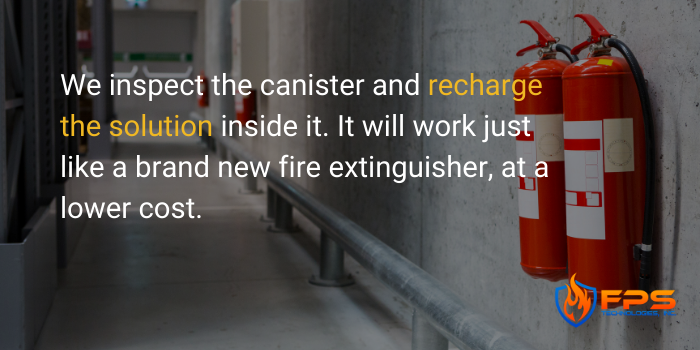
What Do You Do When You’re Done with a Fire Extinguisher?
If you don’t have a rechargeable extinguisher and need to throw your old one away, keep in mind that it cannot be thrown out with the rest of your trash. While extinguishers protect the environment by decreasing smoke pollution, old canisters can be harmful.
Follow these steps to properly dispose of your extinguisher:
- Release any remaining pressure in the canister (note: you’ll want to let the canister sit for a few days to get all of the pressure out)
- Disconnect the head from the cylinder
- Recycle the components somewhere that accepts ferrous metals, like steel
- If you cannot complete any of these steps yourself, drop the extinguisher off at your local fire department
Depending on your extinguisher, harsh chemicals can still be lingering within the canister. For any extinguisher, make sure you let the pressure out completely until the gauge says zero PSI.
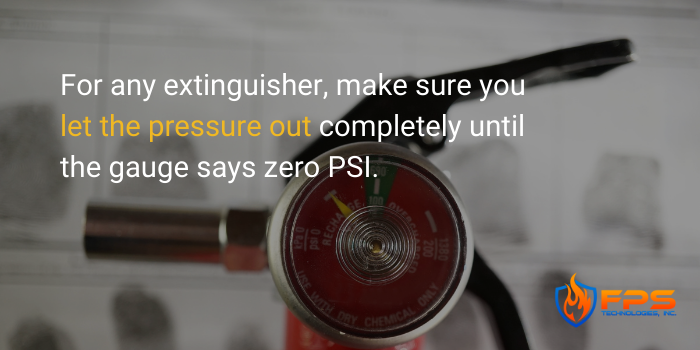
Be Prepared for an Emergency
If you’re reading this article, you probably already know that fire extinguishers are a necessary requirement in any business. They protect your property AND your employees.
One common mistake, though, is thinking you’re prepared just by placing an extinguisher in your business. You need to make sure that you and your employees are aware of your fire extinguisher classification (and where it can safely be used), where it’s stored, and how to use it effectively.
If you need assistance choosing a fire extinguisher, training your employees on its use, or need it inspected and recharged, get in touch with us today.

